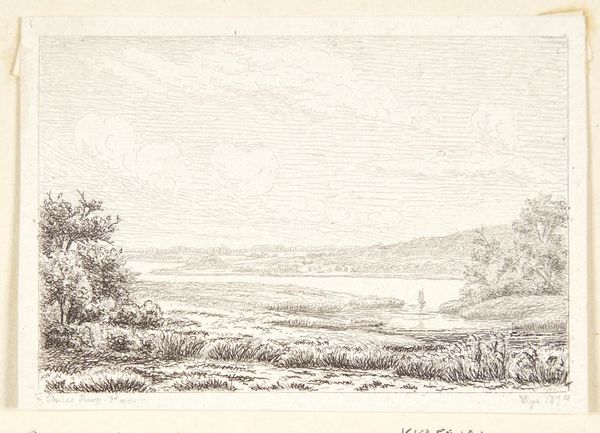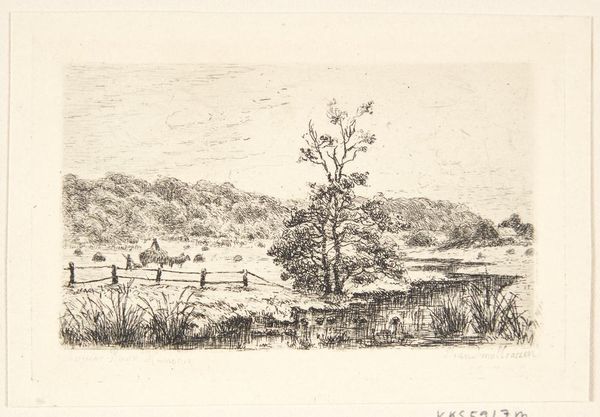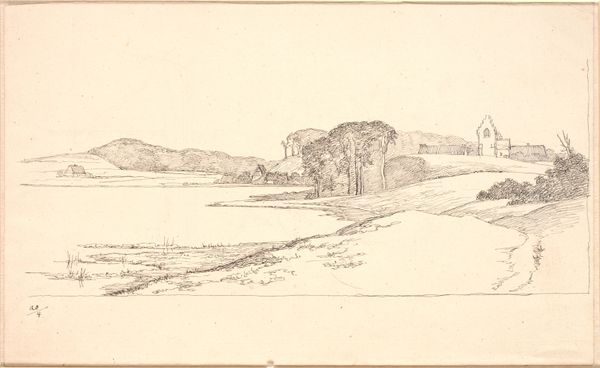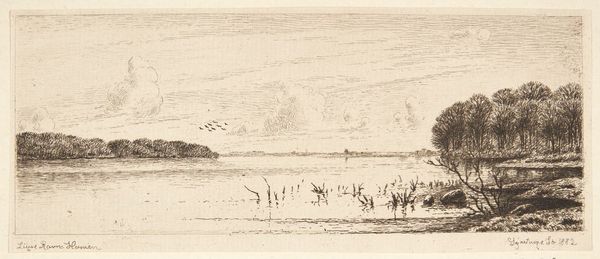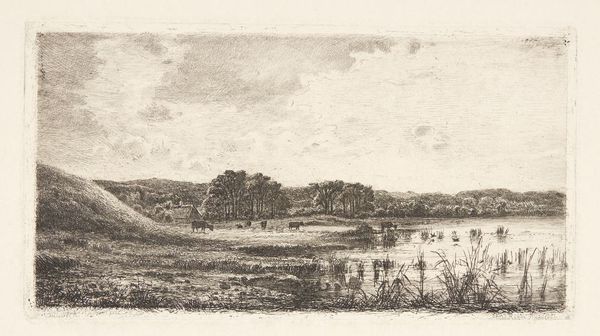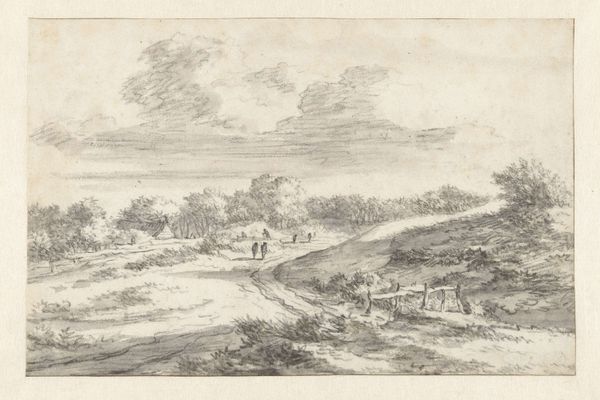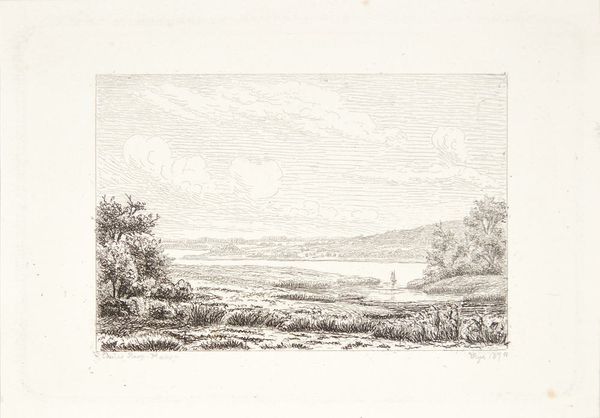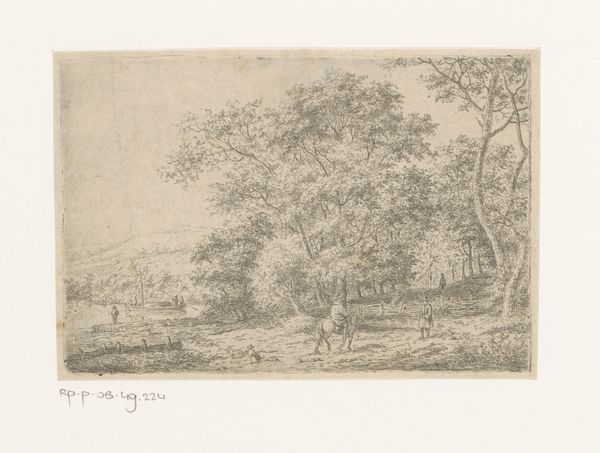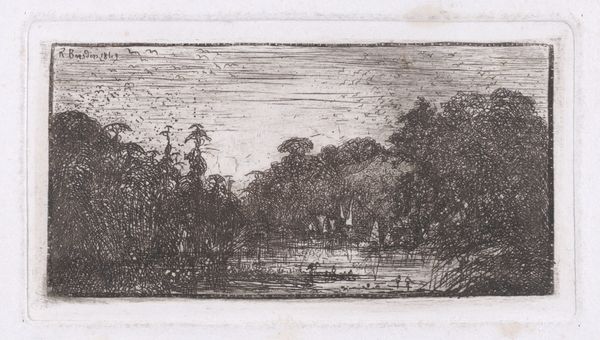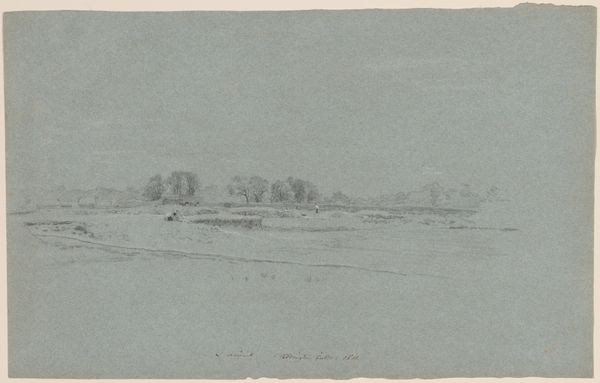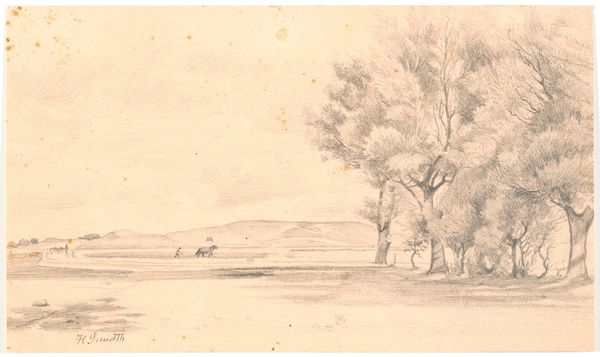
Dimensions: 45 mm (height) x 130 mm (width) (plademål)
Editor: So, this is Louise Ravn-Hansen’s “Himmelbjerget” from 1898, an etching. It’s so delicate and quiet, almost ghostly, and it feels vast despite its small scale. What stories do you think it's trying to tell us? Curator: It's interesting that you find it both vast and ghostly. Consider this image, not just as a landscape, but as a statement of Danish national identity at the end of the 19th century. Himmelbjerget, or “Sky Mountain,” was, ironically, once believed to be Denmark’s highest point, so it’s tied to ideas of national pride. Editor: So, the choice of subject is already political in a way? Curator: Absolutely. Think about what it meant to portray the Danish landscape at this time. Denmark had recently lost territory in the Second Schleswig War. Artists turned to landscape as a means to soothe those wounds, reasserting a sense of belonging and cultural identity rooted in the land itself. What do you see in the mark-making itself? How does Ravn-Hansen's use of etching contribute to this national narrative? Editor: I guess the printmaking technique creates a certain remove. It’s not as immediate as painting, maybe? Curator: Exactly. Etching allows for incredibly detailed lines. That attention to detail in the depiction of nature - the reeds, the subtle reflections on the water - emphasizes an intimate connection to the land. It’s an interesting contrast, right? A mass-producible image creating an intimate feeling? It asks us to consider the complex interplay between nationhood, nature, and artistic expression. Editor: That really changes how I see the print. It is more than just a pretty landscape. Thanks, I hadn't considered it that way before. Curator: Art is often a reflection of its historical moment, urging us to contemplate power dynamics and societal narratives that shape our understanding of the world.
Comments
No comments
Be the first to comment and join the conversation on the ultimate creative platform.
